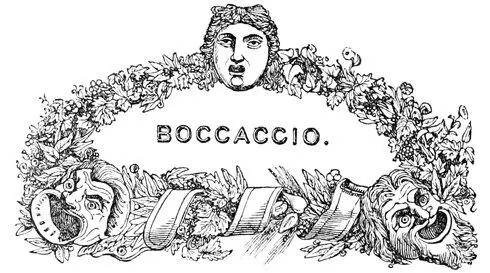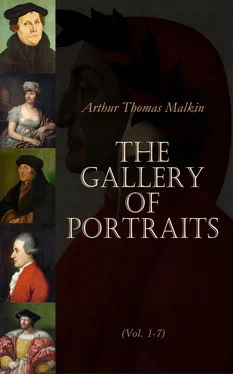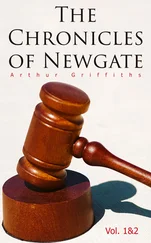“To this faculty of minute observation, which Dr. Wollaston applied with so much advantage, the chemical world is indebted for the introduction of more simple methods of experimenting: for the substitution of a few glass tubes and plates of glass for capacious retorts and receivers, and for the art of making grains give the results which previously required pounds. A foreign philosopher once called on Dr. Wollaston with letters of introduction, and expressed an anxious desire to see his laboratory. ‘Certainly,’ we replied; and immediately produced a small tray containing some glass tubes, a blow-pipe, two or three watch-glasses, a slip of platinum, and a few test bottles.” We may conclude, however, that this was not the whole of Wollaston’s apparatus, nor he in this quite ingenuous; and the anecdote forms another illustration of his dislike to admitting any one into his workroom.
To this ingenious turn of mind and love of minute accuracy we owe several valuable instruments. Of these the most important is his reflective Goniometer, or angle-measurer, which by calling in the unerring laws of optics, enables the observer to ascertain within a small limit of error, the angle contained between two faces of a crystal, and introduced, in the words of Dr. Fitton, “into crystallography a certainty and precision, which the most skilful observers were before unable to attain.” Another of his contrivances is the sliding Scale of chemical equivalents, an instrument highly useful to the practical chemist. We also owe to him the Camera Lucida, which enables persons unacquainted with drawing, to take accurate sketches of any objects presented to their view. An amusing and characteristic anecdote of his fondness for producing great results by small means, is told by Dr. Paris. Shortly after he had witnessed Davy’s brilliant experiments with the galvanic battery, he met a brother chemist in the street, and taking him aside, pulled a tailor’s thimble and a small phial out of his pocket, and poured the contents of the one into the other. The thimble was a small galvanic battery, with which he instantly heated a platinum wire to a white heat.
We have already spoken of the profits which he derived from the manufacture of platinum. This intractable metal, most valuable in the arts from its extreme difficulty of fusion, and power of resisting almost all agents, was rendered by these very qualities almost incapable of being reduced into that malleable form, in which alone it would be made extensively useful. His method of working it is detailed at length in his last Bakerian Lecture, published in the Philosophical Transactions for 1829, and must be read before a person unacquainted with metallurgy can imagine how tedious and laborious were the processes by which he succeeded in bringing platinum to bear the hammer. By an ingenious contrivance, described in the Transactions of 1813, he drew platinum into wire 1
5000 of an inch in diameter, highly valuable for the construction of telescopes; and even reduced some portions to the inconceivable tenuity of 1
30,000. Several of his papers are devoted to the consideration of platinum, and of the two new metals, palladium and rhodium, which, in the course of his inquiries, he discovered in small quantities in the ores of platinum. These also he succeeded in rendering malleable. Rhodium is remarkable for its hardness, which has caused it to be used to point the nibs of metallic pens.
During the autumn of 1828 Dr. Wollaston suffered from an affection of the brain, of which he died, December 22, 1828, retaining his faculties to the last. During the period of his illness, feeling that his life was precarious, he devoted himself to communicating, by dictation, his various discoveries and improvements to the world. Five papers by him were read during the last session of the Royal Society during that year, in one of which he alludes affectingly to his illness, as obliging him to commit his observations to writing more hastily than he was wont. Another is the Bakerian Lecture on the manufacture of platinum, already mentioned.
Previous to his death he invested 1000 l. stock in the name of the Royal Society, the interest of which he directed to be employed for the encouragement of experiments in Natural Philosophy. He was never married, and was Senior Fellow of Caius at his death. He was privately buried at Chiselhurst in Kent; of which parish his father had been rector.
Dr. Wollaston’s philosophical character is thus described in the preface to a late edition of Dr. Henry’s ‘Elements of Experimental Chemistry:’—“Dr. Wollaston was endowed with bodily senses of extraordinary acuteness and accuracy, and with great vigour of understanding. Trained in the discipline of the exact sciences, he had acquired a powerful command over his attention, and had habituated himself to the most rigid correctness both of thought and language. He was sufficiently provided with the resources of the mathematics, to be enabled to pursue with success profound inquiries in mechanical and optical philosophy, the results of which enabled him to unfold the causes of phenomena not before understood, and to enrich the arts connected with those sciences by the invention of ingenious and valuable instruments. In chemistry he was distinguished by the extreme nicety and delicacy of his observations; by the quickness and precision with which he marked resemblances and discriminated differences; the sagacity with which he devised experiments and anticipated their results; and the skill with which he executed the analysis of fragments of new substances, often so minute as to be scarcely perceptible by ordinary eyes. He was remarkable, too, for the caution with which he advanced from facts to general conclusions: a caution which, if it sometimes prevented him from reaching at once to the most sublime truths, yet rendered every step of his ascent a secure station from which it was easy to rise to higher and more enlarged inductions. Thus these illustrious men, Wollaston and Davy, though differing essentially in their natural powers and acquired habits, and moving independently of each other, in different paths, contributed to accomplish the same great ends, the evolving new elements; the combining matter into new forms; the increase of human happiness by the improvement of the arts of civilized life; and the establishment of general laws that will serve to guide other philosophers onwards through vast and unexplored regions of scientific discovery.”

Конец ознакомительного фрагмента.
Текст предоставлен ООО «ЛитРес».
Прочитайте эту книгу целиком, купив полную легальную версию на ЛитРес.
Безопасно оплатить книгу можно банковской картой Visa, MasterCard, Maestro, со счета мобильного телефона, с платежного терминала, в салоне МТС или Связной, через PayPal, WebMoney, Яндекс.Деньги, QIWI Кошелек, бонусными картами или другим удобным Вам способом.













